14 June 2018
By portermathewsblog
via domain.com.au
If you’ve ever bought a heating appliance only to find it woefully inadequate for the task at hand, you need Christian Hoerning’s advice. A technical expert at EECA Energywise, he tells us how to stay toasty without getting burned by the end-of-month bill:
For larger rooms you want to heat regularly, it’s worth paying a bit more upfront for a fixed heater with lower running costs and more heat output than a small electric heater can provide.
Electric heaters may be enough for smaller rooms and rooms you only heat occasionally.
 Hang on the wall electric fires can be two or three sided and have floating shelves such as those in the Skope Trento Suite from The Fireplace. Photo: The Fireplace
Hang on the wall electric fires can be two or three sided and have floating shelves such as those in the Skope Trento Suite from The Fireplace. Photo: The Fireplace
Avoid unflued gas heaters (either portable or with pipes fixed to the walls) that release toxic fumes and moisture, and open fires that are draughty and inefficient.
Match the size of your heater to the space. An oversized or undersized heater won’t work effectively, and can cost more to run.
To minimise the environmental impacts, choose a heating option that uses renewable energy, like wood, wood pellets or electricity (which is about 80 per cent renewable on average).
 An Escea outdoor cooking fire completes this outdoor kitchen by Dravitzki Brown Architecture, it comes with an adjustable cooking plate for flame grilling. Photo: Escea
An Escea outdoor cooking fire completes this outdoor kitchen by Dravitzki Brown Architecture, it comes with an adjustable cooking plate for flame grilling. Photo: Escea
Choose the most efficient model for the job, and use and maintain your heater properly – for example, have heat pumps serviced and regularly clean the filters.
Fireplace: The expert advice
One reason wood fires have fallen somewhat out of favour is increasing clean air regulations in our cities. But wood is a renewable resource – and a real wood fire has romance on its side. So if you’re a sucker for the crackle and the ritual of stoking the logs, look for one that is clean air approved for urban areas.
“For large, open-plan rooms you can’t go past double-sided fireplaces as room dividers. They visually connect two spaces, and add intimate zones to the setting.” – Alex Hodge, Escea.
 Escea’s double-sided DX1500 gas fireplace adds its magic to both the kitchen and living space of this home, designed by Product X Architecture. Photo: Escea
Escea’s double-sided DX1500 gas fireplace adds its magic to both the kitchen and living space of this home, designed by Product X Architecture. Photo: Escea
“Electric fireplaces, using sophisticated LED technology that mimics flames with different effects and colours, are no longer confined to in-wall options. Products such as the Gazco Skope Outset fires can be installed as a two- or three-sided fire so they make a stunning visual centrepiece.” – Geoff Dunn, The Fireplace
“A fireplace in the bedroom is the ultimate luxury, but definitely a better option with gas due to its on/off button convenience and controllable temperature. No one likes to sleep in a room that’s too hot. Escea’s multiroom DX Series has the ability to duct heat into different rooms – a good option for bedrooms as 90 per cent of the heat is ducted, not radiant. – Alex Hodge, Escea
“A fireplace in an outdoor room will add value to your home and extend your living space. Fireplaces provide a central social hub and make alfresco dining a lot more inviting. Escea’s EF5000 outdoor gas fireplace is an easy-to-install option that doesn’t need a flue, so it’s great for balconies and roof gardens that have views you don’t want to obscure.” – Malcolm Burton, Stoke Fireplace Studio
 If you love the authenticity of wood fireplaces but live in the city, you’ll need one that’s clean air approved. Stovax Studio wood fires can be in-built or freestanding. Photo: The Fireplace
If you love the authenticity of wood fireplaces but live in the city, you’ll need one that’s clean air approved. Stovax Studio wood fires can be in-built or freestanding. Photo: The Fireplace
Other ways to heat
Sarah Moore from Rinnai says whole home heating (or central heating) is can be unusual, as most of us are used to spot heating just the living area. “Whole home heating allows you to have a warm, comfortable dry house and we have seen strong growth in this space over the last few years. We expect this trend to continue as more people understand the benefits of heating their whole home.”
Fan heaters are ideal for small spaces such as home offices or powder rooms that measure around 15sqm. Installed in a bathroom, they also reduce steam and should be turned on before you take a shower.
Wall mounted and perfectly quiet, convection panel heaters are a good choice for hallways and bedrooms. Choose one with a timer and an accurate digital thermostat.
Radiant heaters are for personal warmth; if you work from home in an open-plan space you could possibly do with one in the depths of winter but they will make no difference to the ambient temperature of the room.
Don’t forget to move the heat outdoors. A 2400W electric outdoor patio heater, for instance, provides heat for areas up to 10m away.
Comments (0)
14 June 2017
By portermathewsblog

Winter’s chill brings cosy decor and lazy afternoons spent sipping hot chocolate in front of the heater, but it can also bring major electrical bills. If heating your home is seriously expensive, then you’re going to want to read these 12 cost-effective ways to stay warm this Winter.
-
- Get the Right Window Coverings
If you’ve ever stood next to a drafty window, then you can attest that they’re major culprits of heat loss. Investing in thick, lined curtains or adding liners to your existing curtains (Ikea have them for $29.99 a pair) will keep the cold air out. Keeping them closed during Winter you can cut your energy bill down by up to 20 percent.
Create an extra layer of padding between the elements and your house by adding a storm door. While it’s a little bit pricier up front, you can reduce energy loss up to 50 percent by purchasing a storm door made with low-emissivity glass or coating.
-
- Install a Programmable Thermostat
Instead of keeping your heat on full blast all day, use a programmable thermostat to set the temperature to turn it down while you’re out in the middle of the day and turn it back up right before you come home in the evening. Turning the temperature back at least 10 degrees for eight hours a day can save you up to 15 percent a year on your heating bill.
Invisible cracks and gaps around the house allow valuable heat to seep out. Taking a little time in Summer or Autumn to caulk or weather strip these leaks around the house will save you big money on your energy bill come Winter. Common areas in need of insulation include the space between the baseboard and the floorboard, behind electrical outlets, and around windows and attack hatches.
Ceiling fans usually have a switch you can flip to change the direction the fan blades are rotating in. By simply switching it to clockwise rotation in Winter, you’ll push hot air that has risen to the ceiling back down into the room. Doesn’t get easier than that.
It’s a lot cheaper to throw on a sweater and some fuzzy slippers than to crank up the heat every time you get chilly, so keep warm layers close at hand and the temperature at a reasonable setting.
-
- Improvise Wall Insulation
If tearing down the drywall to add insulation isn’t an option, then it’s time to get clever. You can line chilly external walls with cold-absorbing materials like a tall shelf filled with books, use decorative screens as cold air blockers, and even line baseboards with cardboard.
-
- Position Furniture Around Heat Sources
For a free and temporary fix, give your living spaces a Winter makeover by rearranging furniture away from cold external walls and around heat sources, like the fireplace. It will make those frigid nights more enjoyable.
As the nights get longer, our lights stay on for — longer but it doesn’t have to cost more. LED bulbs use 85 percent less energy compared to traditional globes and have a lifespan of 25,000 hours.
Wooden or tiled floors can be really cold under foot in Winter. Laying a thick rug that feels soft under-foot will help keep your home cosy.
Swapping your quilt for a thicker one or adding an extra blanket (between the sheet and quilt) will keep you warm at night without using a heater.
Getting your washing dry can be hazardous when the weather is bad, but making the most of any sunny moments will save you on dryer costs. Pick up a portable dryer that you can quickly bring in if the weather gets bad or keep inside by a window.
Comments (0)
30 May 2017
By portermathewsblog
Modiefied via houzz.com.au
Embrace the new season by making your home a cosy and comforting retreat you won’t want to leave.
There are plenty of things to love about winter – soft, woolly blankets, hearty vegie soup and cosy, candlelit nights in, just to name a few. Consider these simple ways to prepare your home for the cooler months ahead and you will love it even more.
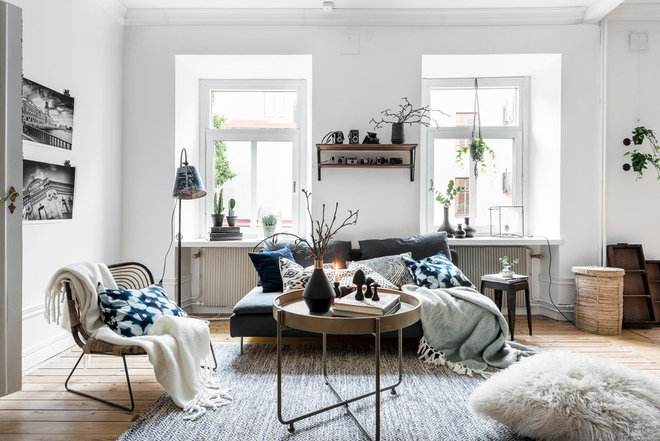 INTRO INRED
INTRO INRED
1. Get your heating sorted
While lots of Australians mightn’t give home heating a second thought for most of the year, now is the time to make sure everything is in good working order. No heater, air conditioning or fireplace? Consider insulation options and ensure you have adequate bedding and blankets on hand for when the temperature drops.
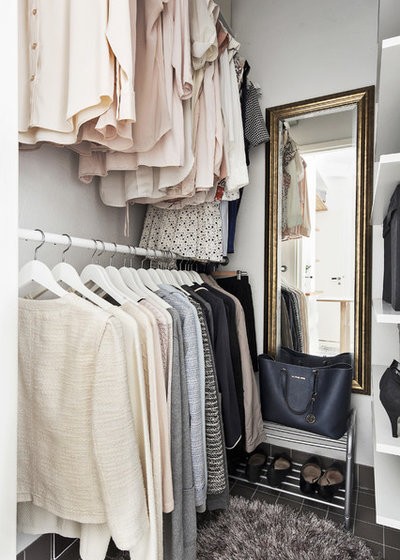
Stylingbolaget
2. Reorganise your wardrobe
Bringing your knits, scarves and boots out of storage can feel like you have a whole new wardrobe! After gently washing woolies, bring cold weather items to the front of the your cupboard and create more room by packing away those you won’t be needing as often, such as swimwear, tank tops and summer dresses.
 Havven
Havven
3. Plan a big night in
There’s no better time of year to organise a weekly night in, and we’re not talking about an evening in front of the television. Cold weather outside is no excuse for being anti-social – stock up on board games and snacks and invite friends over for a weekly get-together, taking it in turns to host.
4. Up your soft furnishings
Early starts are not much fun when it’s freezing above the blankets, so having something soft and warm underfoot can make all the difference. Adding luxe furnishings such as wool, faux fur and velvet to your bedroom and living area brings an instant feeling of cosiness and makes cool mornings more bearable.
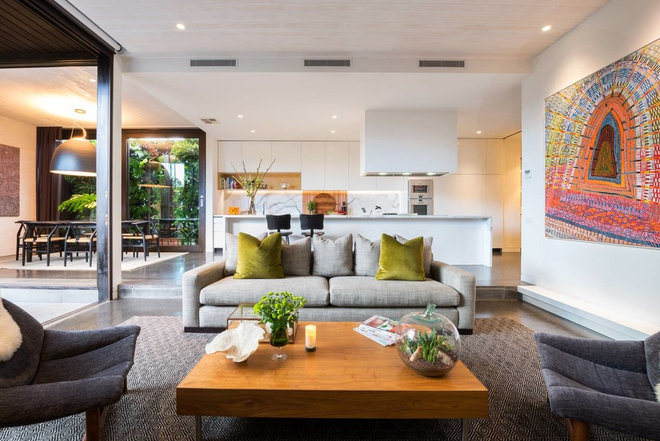 Rachel Lewis Photography
Rachel Lewis Photography
5. Don’t forget about colour
It’s easy to gravitate towards dark, comforting shades when the weather turns icy, but adding some bursts of colour can be a great mood-booster. Bring in some cushions in your favourite hue or hang a vibrant artwork to warm a cool palette.
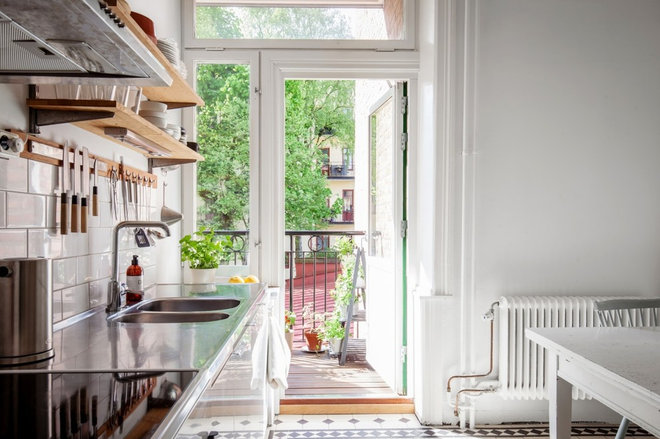 Ahre Fastighetsbyrå
Ahre Fastighetsbyrå
6. Let in some fresh air
Just because things are chilly outside doesn’t mean you need to close the house up. Adequate ventilation is important year-round, and over winter it can be uplifting to throw open the windows and allow some cool, crisp air to freshen up a musty space, even if it’s only for 20 minutes.
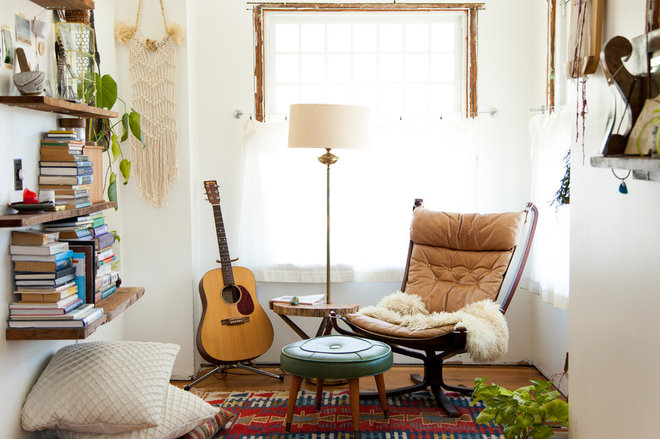 Ellie Lillstrom Photography
Ellie Lillstrom Photography
7. Take up a hobby
With early sunsets and long, cold nights, winter is the ideal time to begin a new project or hobby. Have you always wanted to play the guitar? Take up knitting? Learn a new language? Start now and you’ll be up-skilled by the time spring rolls around.
8. Cook up seasonal produce
Celebrate winter by making a delicious meal with a fresh, seasonal bounty of vegetables. In Australia, beetroot, broccoli, cauliflower, sweet potato and onions are all at their best for whipping up a warming soup.
9. Declutter and refresh
While an annual spring clean is common practice, many might not consider a home refresh and declutter coming into the colder months. Take stock of what’s in your home – do you have adequate storage? Is your living area suitable for indoor entertaining? Is there anything that can be packed away or donated to charity? A winter clean-out can be just as effective as a spring clean in making your home feel fresh and ready for the arrival of a new season.
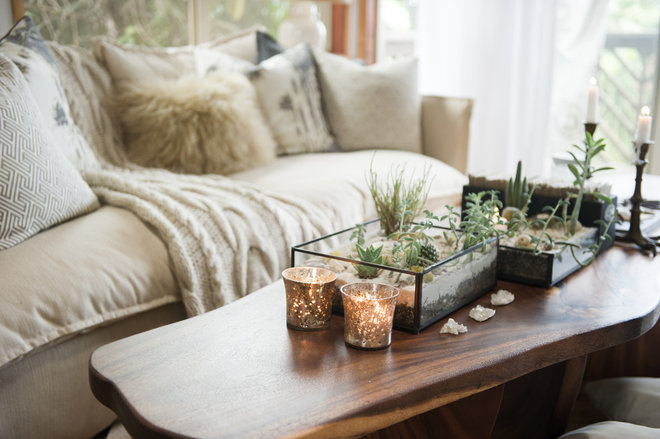 Ashley Camper Photography
Ashley Camper Photography
10. Light a warming candle
Candles are synonymous with winter and add a comforting glow to any dinner setting or bedside table. Look for beeswax and soy candles with natural cotton wicks and pure essential oil fragrances – vanilla, sandalwood and white musk are warming winter fragrances.
Comments (0)